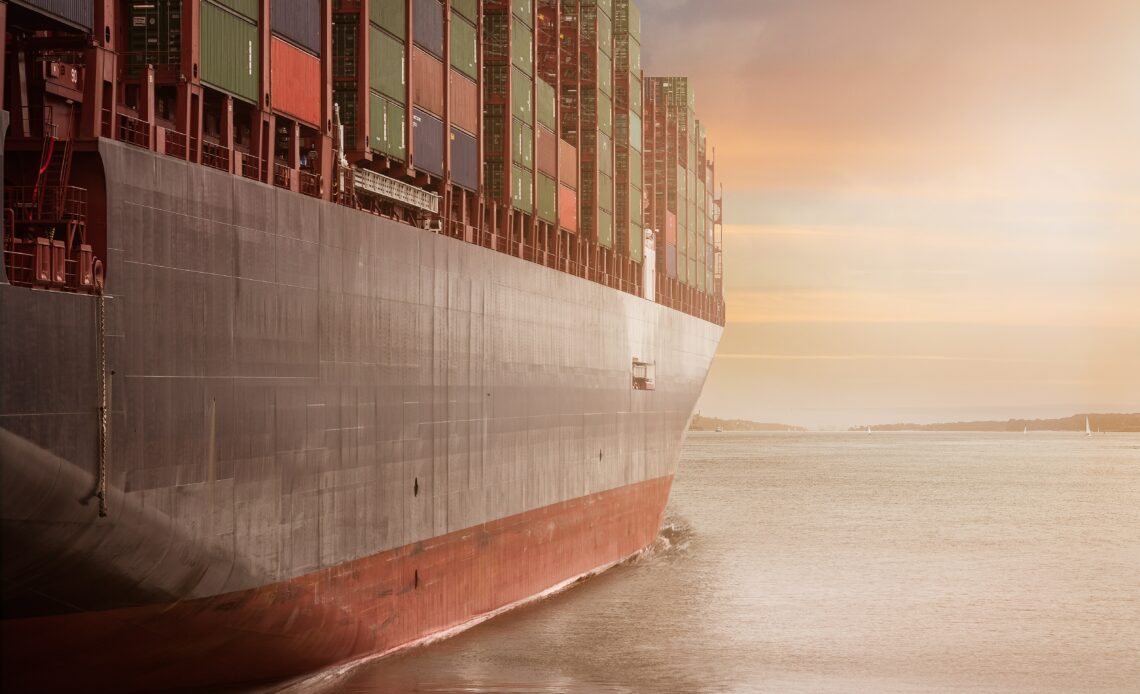
The value of a resilient supply chain cannot be emphasized in a world that is becoming more interconnected and unpredictable. The foundation of our global economy, supply chains, are susceptible to disruptions from calamities, financial crises, and geopolitical unrest.
The inability of firms to meet client expectations and preserve profitability can be severely hampered by these disruptions in logistical operations. Understanding and enhancing supply chain resilience are hence crucial.
This article describes supply chain resilience and also emphasizes its components and benefits. Let’s see together how we can tackle disruptions and as well develop resilient logistics networks.
Understanding Supply Chain Resilience
Supply chain resilience refers to the ability of an organization to be able to withstand disruptions while still being able to maintain its core functions. It is about being nimble and foresighted enough to respond quickly when unforeseen circumstances affect the flow of goods and services.
Supply chain resilience is about prospering in the face of adversity, not merely surviving disturbances. It entails being proactive rather than reactive, i.e. not only being ready for disruptions, but also having plans in place to recover rapidly, minimizing downtime and losses.
Key Components of Resilient Supply Chains
A resilient supply chain is built on several critical components. These include:
Robust Risk Assessment and Management: Resilient supply chains diligently assess potential risks, from natural disasters to economic fluctuations. They have comprehensive strategies in place to manage and mitigate these risks.
Diversified Supplier Networks: Resilience involves not relying on a single source for critical components. Instead, supply chains diversify their supplier networks, reducing vulnerability to disruptions from one source.
Information Technology: Utilizing advanced IT systems like AI and IoT can enhance forecasting, decision-making, and overall resilience.
Real-time Visibility into the Supply Chain: Resilient supply chains employ advanced technologies to gain real-time visibility into every aspect of their operations. This visibility allows for proactive decision-making when disruptions occur.
Strong Communication Channels: Effective communication is paramount. During a crisis, resilient supply chains maintain open lines of communication with suppliers, partners, and stakeholders to facilitate quick reaction and collaborative problem-solving.
Benefits of a Resilient Supply Chain
Now, let’s not just focus on the nuts and bolts we talked about earlier; we should also understand the real perks that come with having a resilient supply chain. It’s not just about surviving disruptions; there are a bunch of benefits that businesses can enjoy from having a strong and flexible supply chain. Let’s delve into these benefits:
- Minimized Downtime: Resilient supply chains recover faster, reducing downtime and revenue loss.
- Customer Satisfaction: They can meet customer demands even during disruptions, ensuring satisfaction.
- Cost Efficiency: Effective risk management lowers overall supply chain costs.
- Competitive Advantage: Resilience sets businesses apart from competitors who struggle during disruptions.
- Stakeholder Trust: Consistency in supply chain performance builds trust with customers and partners.
- Innovation Catalyst: By promoting innovative responses to problems, resilience promotes innovation.
In order to create a supply chain that can resist interruptions and flourish in the unstable business environment of today, it is essential to comprehend these elements and advantages.
Navigating Disruptions
In the frantic, international business environment of today, supply chain disruptions are an unavoidable fact. The difficulties that might impair logistics operations range widely and are frequently unanticipated, from natural disasters to economic crises.
This section will cover typical supply chain disruptions, mitigation techniques, and in-depth case studies of successful navigation.
Common Supply Chain Disruptions
Understanding the nature of disruptions is the first step toward building a resilient supply chain. Here are some of the most prevalent disruptions that businesses face:
Natural Disasters: Earthquakes, hurricanes, floods, and wildfires can disrupt transportation, damage infrastructure, and disrupt the flow of goods.
Economic Crises: Economic downturns, currency fluctuations, and recessions can impact demand, supply, and financial stability within the supply chain.
Supplier Issues: Supplier bankruptcies, quality issues, or production delays can disrupt the entire supply chain.
Transportation Disruptions: Strikes, port closures, and disruptions in transportation networks can delay shipments and disrupt delivery schedules.
Geopolitical Tensions: Trade disputes, political instability, and sanctions can impact the movement of goods across borders.
Strategies for Mitigating Disruptions
Mitigating disruptions requires a proactive approach. Here are strategies that resilient supply chains employ:
- Regularly assess potential risk and vulnerabilities within the supply chain.
- Diversify supplier networks and sourcing options to reduce dependency on a single source.
- Maintain safety stock to cushion against unexpected demand spikes or supply shortages.
- Make a thorough supply chain map to pinpoint crucial nodes and dependencies.
- Create solid business continuity plans that define what to do in the event of a disruption.
Case Studies of Successful Navigation
Case studies from real-world environments offer priceless information about how companies have successfully handled disruptions. Let’s look at how two market leaders, 3M and Walmart, have shown tenacity in the face of a variety of supply chain issues.
During the COVID-19 pandemic, 3M, a diversified technology company, faced disruptions in the supply chain for personal protective equipment (PPE) due to surging demand. The business quickly adjusted by increasing production, working with new suppliers, and putting strict quality control systems in place.
This proactive approach allowed 3M to meet the critical demand for PPE while also demonstrating the importance of agile supply chain management.
The largest retailer in the world, Walmart, has a track record of superior supply chains. When faced with natural disasters like hurricanes, Walmart relies on its advanced logistics and data analytics to keep inventory in check, predict demand, and restock store shelves swiftly.
With this swift response that Walmart took aided in a speedy recovery and also set an example for the sector.
By taking cues from these stated case studies, you would agree with me that your organization can draw insightful knowledge on how to strengthen your supply chains to be able to handle disturbances with resilience and agility.
Building Robust Logistics Networks
Building robust logistics networks is really crucial, especially when you have to ensure the resilience and efficiency of your supply chain. The fundamental components of developing logistics networks that can resist interruptions, enable expansion, and precisely deliver goods and services will be covered in this section.
We’ll talk about how you can create resilient supply chain structures, using technology to increase resilience, and I’ll also be introducing the part that transportation businesses play in this project.
Designing Resilient Supply Chain Structures
The structure of the supply chain itself serves as the cornerstone of a solid logistics network. Redundancy in the network, the location of distribution centers, and the manner of transit all play important roles. In order to ensure that crucial functions have backup plans, resilient supply chains are frequently constructed with redundancy in mind.
Additionally, strategically placed distribution centers can reduce travel times and hence the vulnerability to transportation network interruptions.
Leveraging Technology for Enhanced Resilience
Technology has completely changed the game for supply chain resilience in the digital era. We now use blockchain, artificial intelligence (Al), the Internet of Things (IoT) and predictive analytics as we please, and this helps us make data-driven decisions anytime.
Supply chain managers may proactively react to disruptions, reroute shipments, and optimize inventory levels thanks to these tools’ visibility and data. With technology interactions with your partners, customers, and suppliers, would be improved greatly resulting in a more robust ecosystem.
The Role of Transportation Companies
A full truckload shipping company is integral to the success of resilient logistics networks. They provide the critical link between suppliers, manufacturers, and customers. A reliable transportation partner offers various benefits, including:
- Scalability: The ability to scale transportation capacity up or down based on demand fluctuations.
- Expertise: Industry expertise and knowledge of optimal routes and modes.
- Adaptability: The agility to adjust to changing market conditions and disruptions.
- Tracking and Visibility: Advanced tracking systems that provide real-time visibility into shipments.
Working hand in hand with transportation companies is a smart move for businesses looking to boost their supply chain resilience. It keeps goods moving smoothly and on time.
Building solid logistics networks is all about finding that balance between saving costs and being ready for anything. While cutting costs is important, putting some money into backup plans, technology, and partnerships can pay off big time in terms of resilience, keeping customers happy, and staying competitive.
Conclusion
Long-term success depends on being able to navigate shocks and create resilient logistics networks; it is not merely a strategic advantage.
Organizations may position themselves in such a way to prosper in the face of uncertainty by embracing the ideas described in this article, which include recognizing the elements of resilience, reducing disruptions, and developing strong logistics networks.
As we move forward, embracing resilience as a key tenet of our supply chains will not only protect us against uncertainty but also drive innovation, client confidence, and long-term success.



